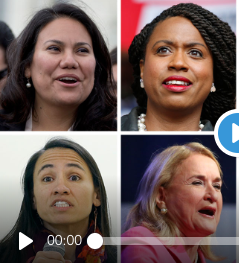Diversity in the 2018 Elections – is the demographic of candidates changing to match that of the electorate?
In a representative government, legislators are elected to represent groups in their districts or states. Regardless of party affiliation, governments in the U.S. and throughout the world have been overwhelmingly male dominated. So while the obvious answer is NO, it is interesting to see how governments are changing.
Demographics of a community may change rapidly, but government representation changes much more slowly. The 2018 midterm elections in the United States have seen a significant increase in the number of candidates (and winners) representing multicultural communities. Resulting in the first Arab and Muslim representatives to the House of Representatives, the first openly gay Governor, and more latino as well as female representatives representatives on their way to D.C. the recent elections are steps in diverse communities gaining more representation.
VIDEO – Race becoming historic factor in some 2018 midterm elections
Both parties will need to continue to recruit candidates that are representative of their communities. While there is still a large differences between the percentage representation in government and the diverse make up of the country, even small representation will have a voice.
In 2018 there were more voter resources for multicultural voters than ever before as well as a significant amount of focus on the diverse candidates that were making waves in their communities. While it is too early to tell if this becomes a trend, however looking at the changing demographic of the country, these multicultural communities need to make their voices heard.
Resources:
-
Infographic: Multicultural Voters
-
Arab American election results
-
Reach Hispanic: De Qué Se Tratan las elecciones Midterm 2018?
-
Alcance Media Group : a network that helps advertisers and their brands, campaigns, & agencies reach multicultural segments in the United States, Canada and internationally.


